The Chesapeake Bay Maritime Museum celebrates the enduring legacy of watermen and their industry while curating an ever-growing collection of timeless treasures
Written by Joe Willey | Photography by Jill Jasuta
Museums are often meant to stand apart, be revered and inspire a sense of awe. But instead of a welcoming space to be explored, they can become a cold and lifeless monument to history. However, some museums still have the lifeblood of history coursing through their exhibitions. The Chesapeake Bay Maritime Museum is one of those. It is alive.
The dynamic museum was founded in 1965 on picturesque Navy Point in St. Michaels. The surrounding 18 acres were the previous site of a thriving collection of seafood packing houses and docks where skipjacks once moored to unload their daily catches. It still retains the Chesapeake Bay flavor of a working waterfront, and some buildings remain after being restored for museum usage. The grounds ideally complement this town with a history of sailing, commerce and maritime exploits.
The old Knapps Narrows drawbridge — once standing a few miles away, connecting the commercial-sailing Tilghman Island community to the mainland — guards the entrance to the museum. Pieces of Chesapeake Bay history rest around the campus. An icon of the Chesapeake Bay region is the screw-pile lighthouse, and the museum owns a classic example of the style in the Hooper Strait Lighthouse. The structure once resided in waters off of southern Dorchester County. The museum saved it from demolition and shipped it on a barge to its current location on Navy Point.
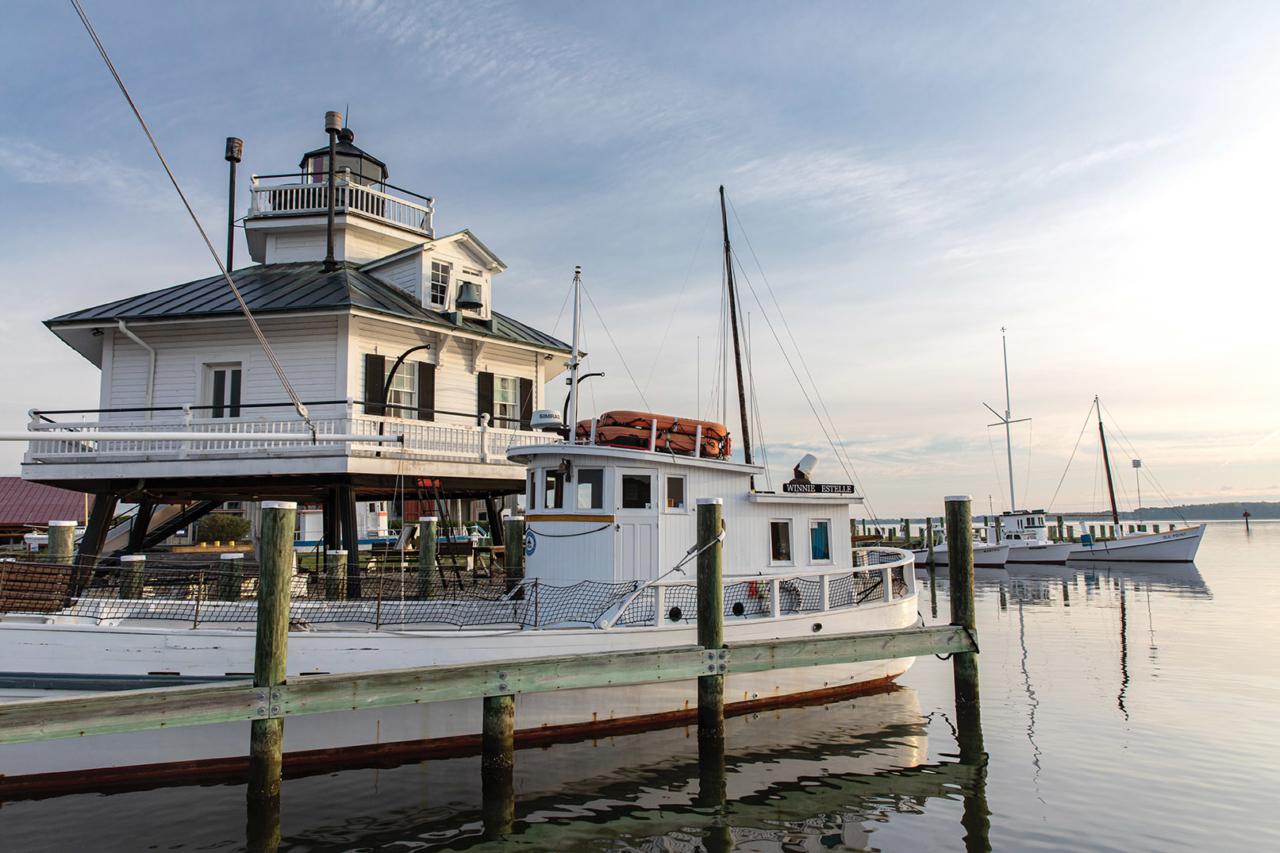
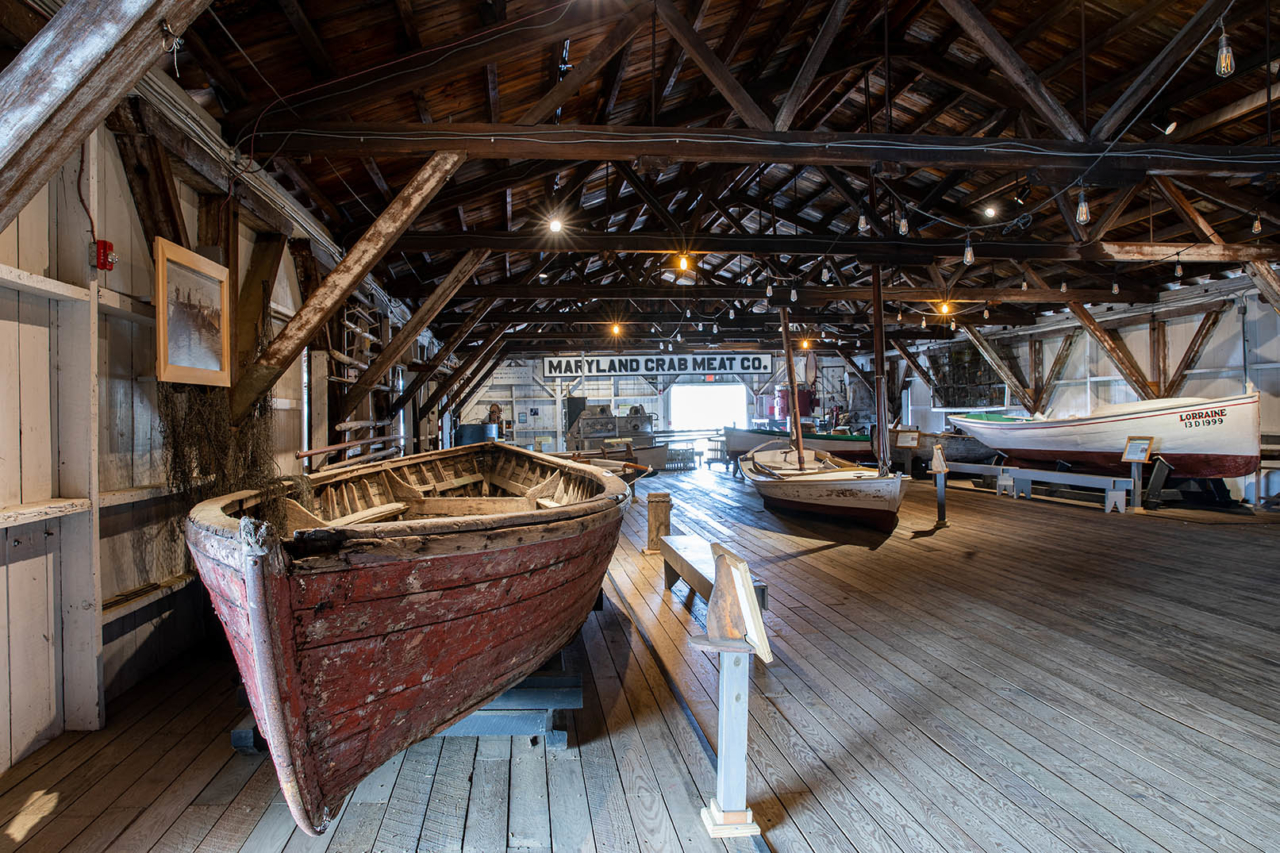
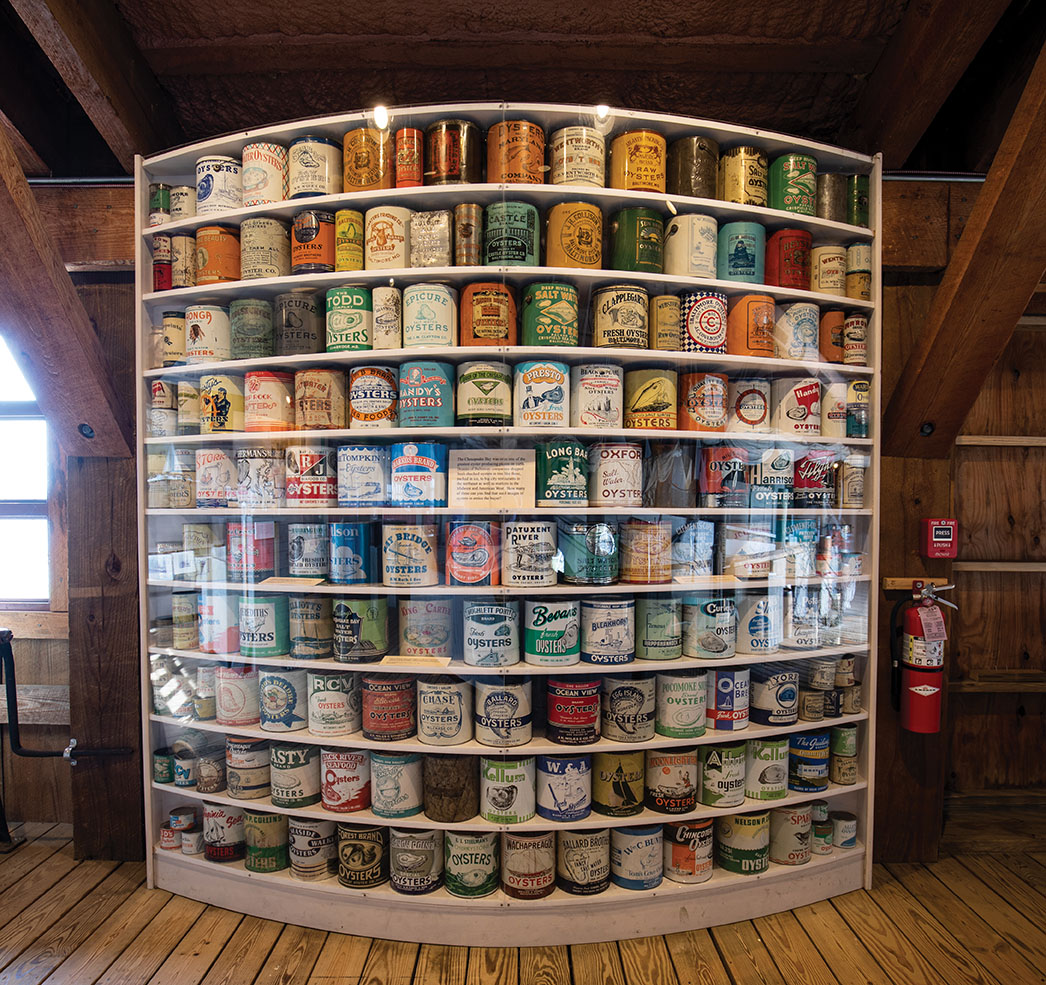
The bandstand from Tolchester Beach, a once-thriving resort near Rock Hall in Kent County, now sits peacefully near the lighthouse. “CBMM is a place to come and experience pieces of history from the Chesapeake all in one place,” says Izzy Mercado, the museum’s director of marketing and brand management. He is right. These objects hold memories like the salt that has soaked into the wood.
Perhaps the beating heart of the Chesapeake Bay Maritime Museum is its boatyard. It is practical and necessary to maintain the museum’s “floating fleet” — a collection of vintage vessels that still operate much like when they were commercial workboats. Recently, the boatyard received even greater attention, when it was selected to build a new Maryland Dove, a replica of one of the two trading ships that brought settlers to the original Maryland colony. The ship, owned by the state of Maryland and operated and maintained by the Historic St. Mary’s City Commission, will make its maiden voyage across the Chesapeake Bay later this summer. The construction of the tall ship brought shipwrights from around the country to construct and learn in the museum’s famed boatyard.
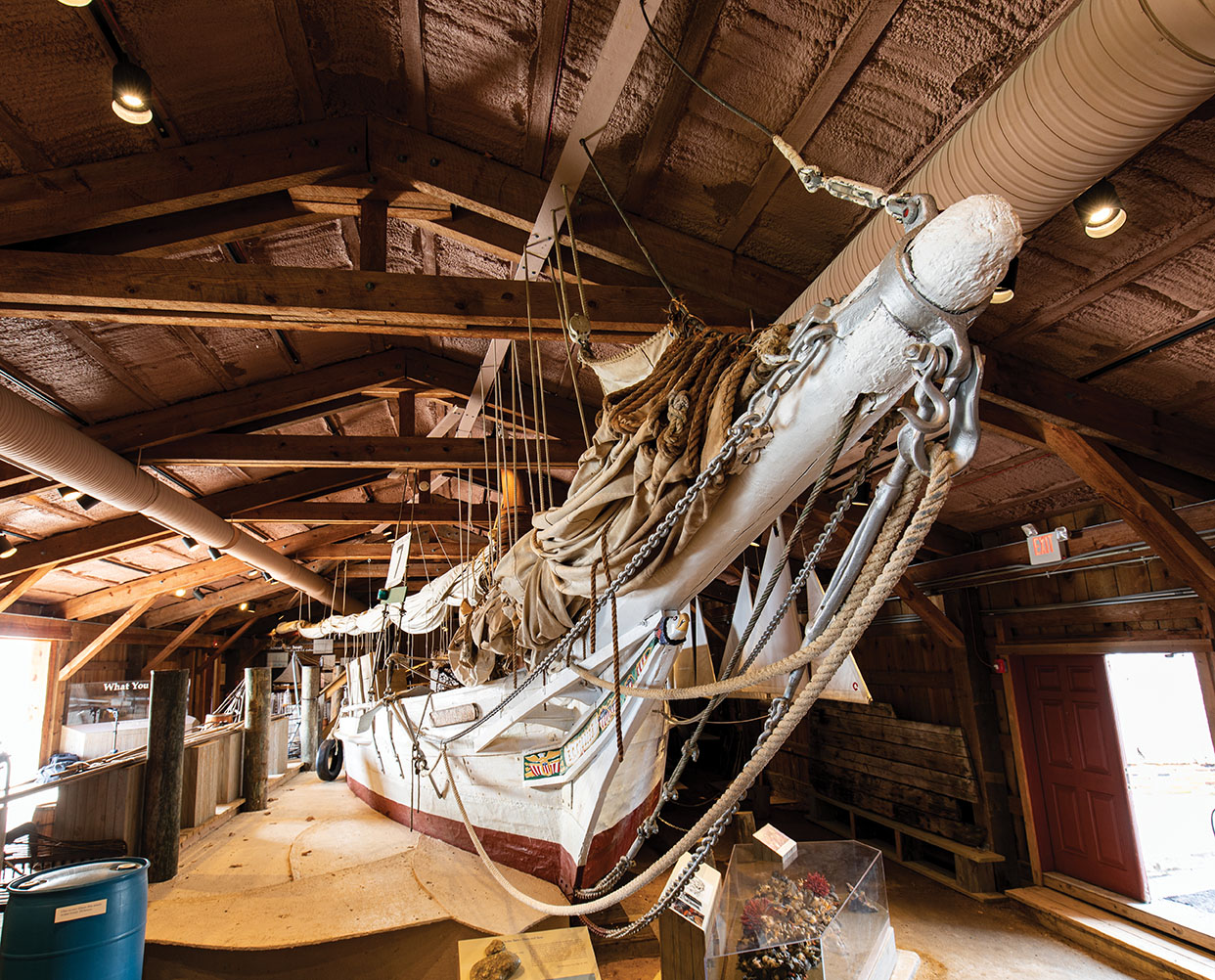
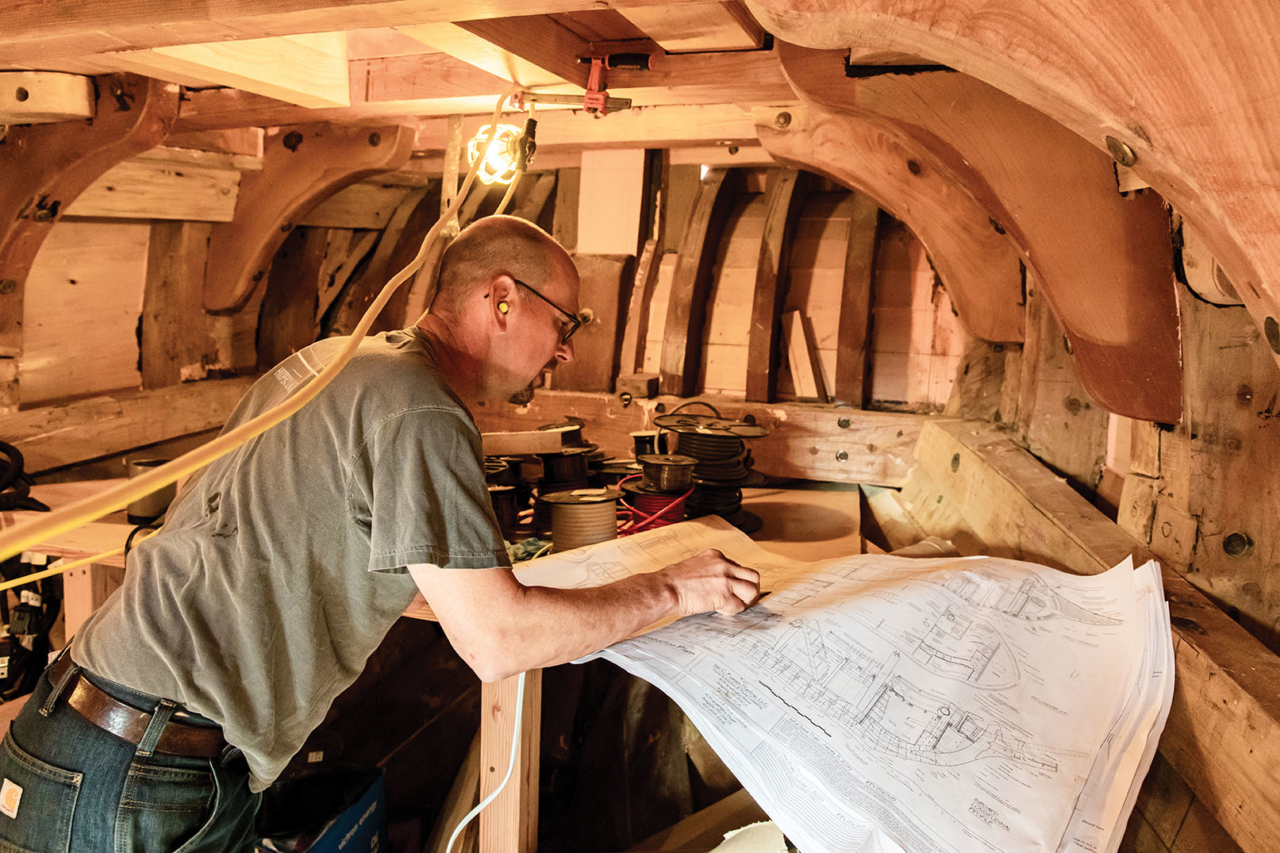
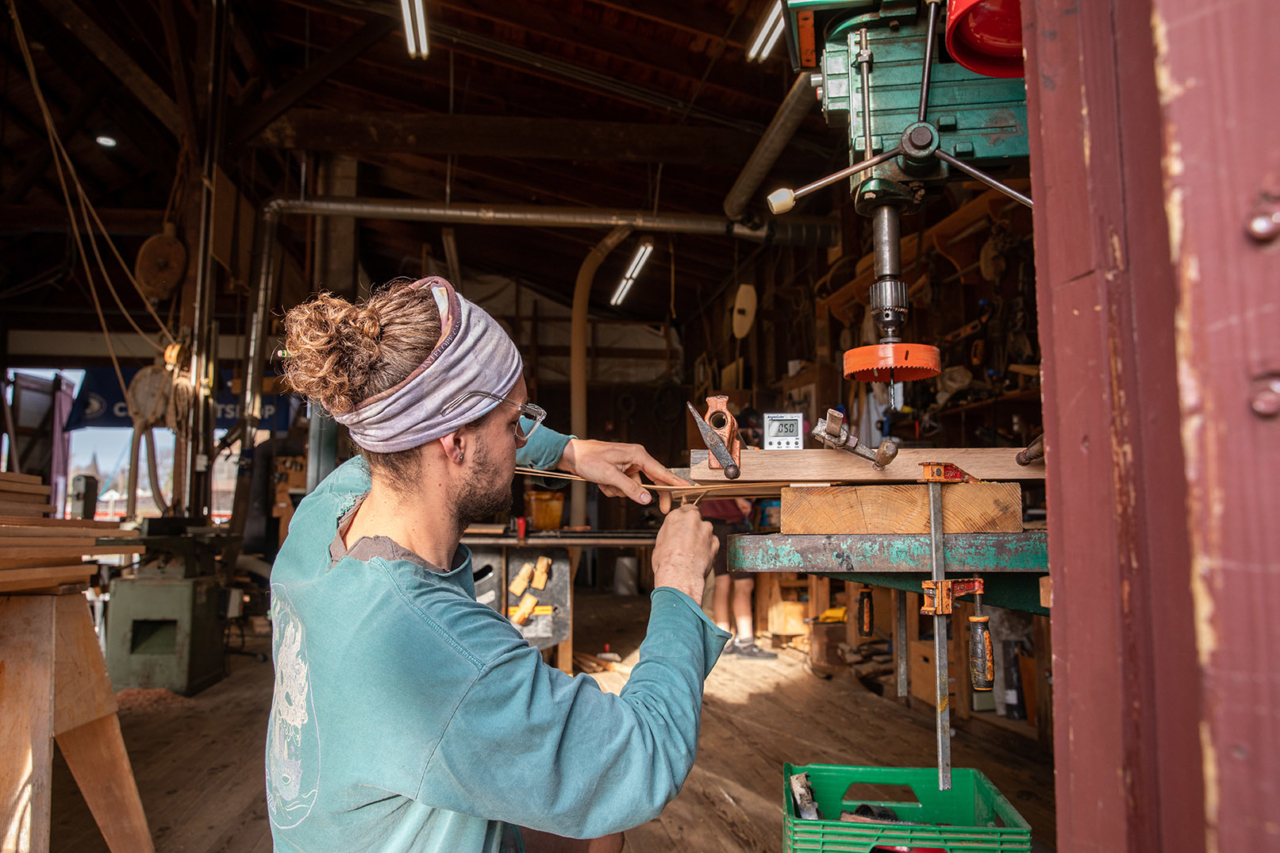
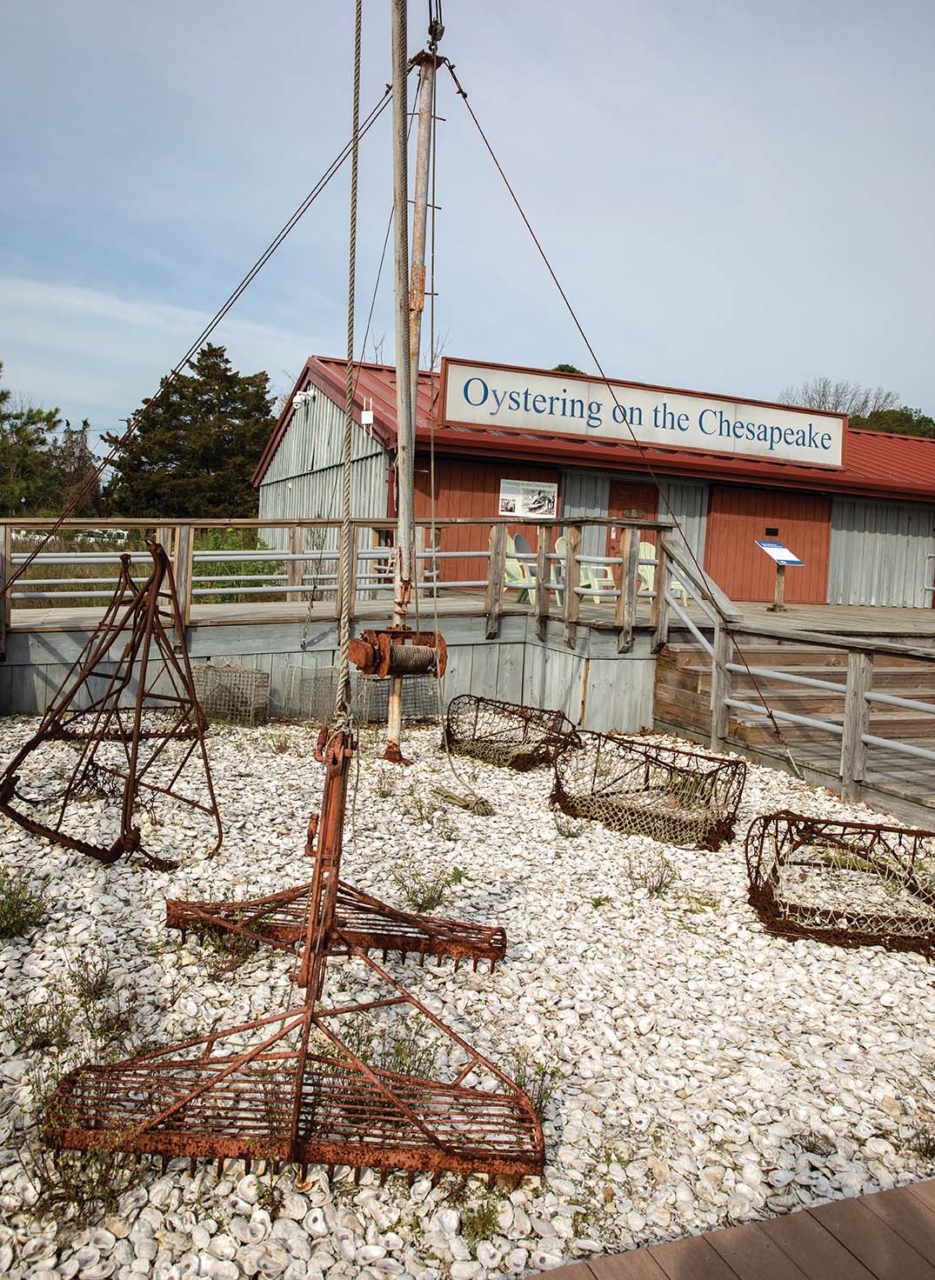

The dedicated and diverse team at the Chesapeake Bay Maritime Museum brings energy to exhibits. Each day is “always new and interesting,” Mercado said while describing the projects he works on each day. A new library and collections building — a boon for the curatorial team — is nearing completion. Exhibits frequently change, but the museum’s collection of photos, manuscripts, books and oral histories continue to anchor the museum to the Chesapeake Bay community.
The Chesapeake Bay region is still thriving, a vibrant community proud of its traditions. And though the Chesapeake Bay Maritime Museum remembers the past, only sawdust covers its collections. The true history of the Chesapeake Bay region continues to flow, and this museum is not just collecting it; it is making it, too. CS
